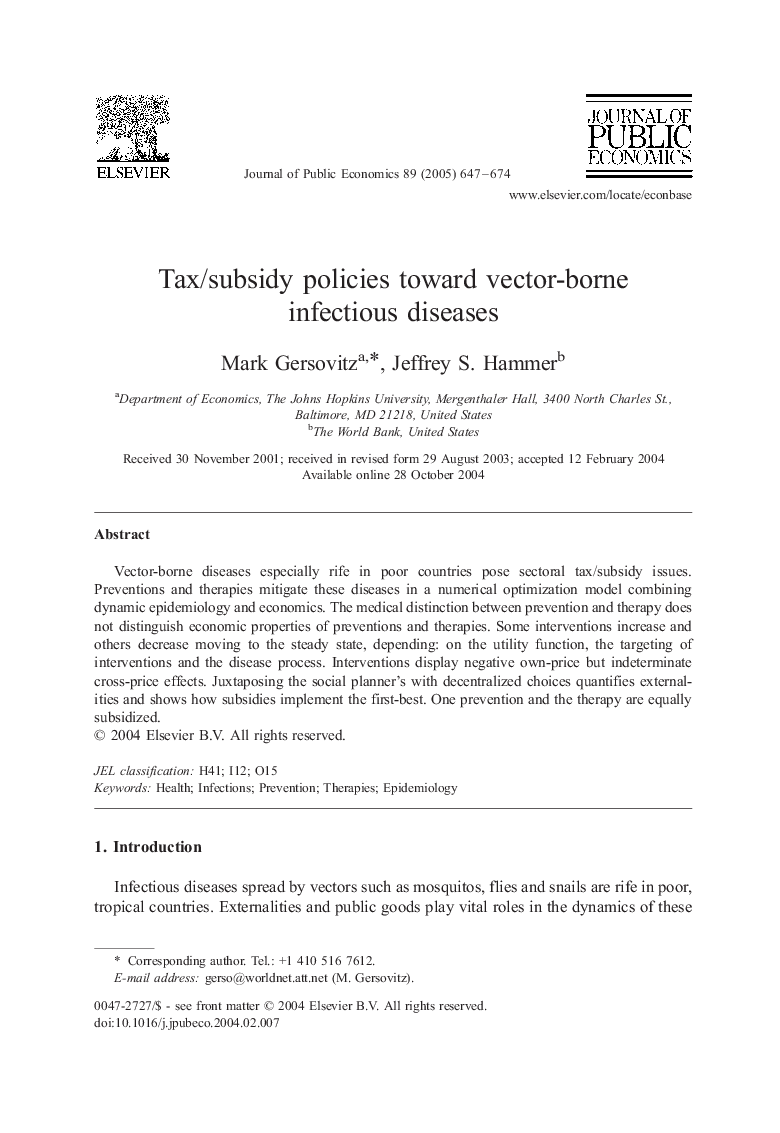| Article ID | Journal | Published Year | Pages | File Type |
|---|---|---|---|---|
| 10479680 | Journal of Public Economics | 2005 | 28 Pages |
Abstract
Vector-borne diseases especially rife in poor countries pose sectoral tax/subsidy issues. Preventions and therapies mitigate these diseases in a numerical optimization model combining dynamic epidemiology and economics. The medical distinction between prevention and therapy does not distinguish economic properties of preventions and therapies. Some interventions increase and others decrease moving to the steady state, depending: on the utility function, the targeting of interventions and the disease process. Interventions display negative own-price but indeterminate cross-price effects. Juxtaposing the social planner's with decentralized choices quantifies externalities and shows how subsidies implement the first-best. One prevention and the therapy are equally subsidized.
Related Topics
Social Sciences and Humanities
Economics, Econometrics and Finance
Economics and Econometrics
Authors
Mark Gersovitz, Jeffrey S. Hammer,
